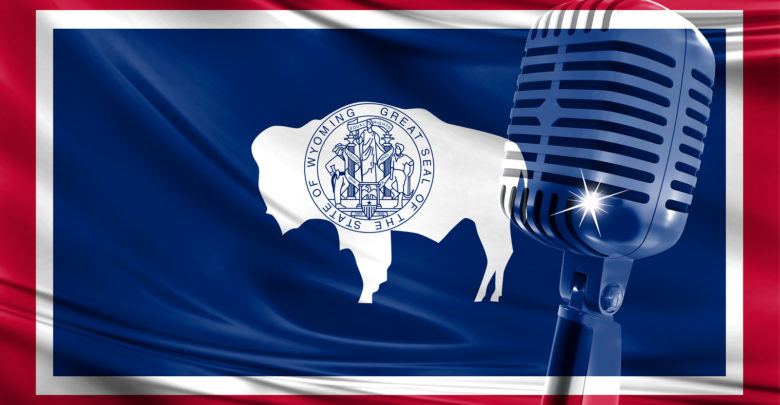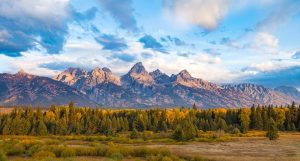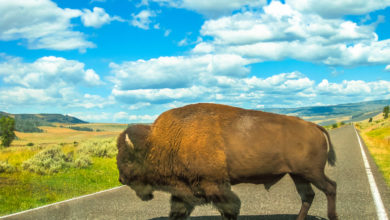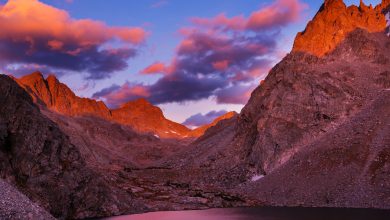
The western region of the United States is one of the most beautiful to explore thanks to areas that are sparsely populated yet surrounded by astounding natural beauty. Wyoming is the second least populated state in the country and is home to some of the most beautiful natural wonders thanks to its combination of the Great Plains and the Rocky Mountains. Depending on where people travel, they can find snow-covered mountains or sprawling plains and farmland, offering plenty of outdoor adventures to enjoy.

While the natural wonders are great to explore in Wyoming, travelers might also be looking to enjoy some entertainment such as live music and concerts. The state is home to some fantastic venues that feature a wide array of musical genres and settings, making them all wonderful to enjoy. Here are some of Wyoming’s best live music spots to catch a show at!

Casper Events Center
A popular destination that travelers enjoy visiting in Wyoming is the town of Casper thanks to its beautiful Casper Mountain which offers hiking trails and amazing views of the surrounding area. Casper is also home to the Casper Events Center which was constructed in a horseshoe shape high on a hill to offer concertgoers views of Casper Mountain, the town, and the nearby Platte River Valley. The venue offers a wide array of events throughout the year including sporting events, trade shows, rodeos, conferences, private events, and more, however the concerts hosted there always bring out crowds.

Those who enjoy live music at Casper Events Center will most frequently hear country and rock music and in the past, the space has hosted acts including Reba McEntire, Carrie Underwood, Elton John, and the Foo Fighters. Some upcoming acts performing at the Casper Events Center include Neal McCoy, Clint Black, Brett Michaels Hometown Heroes Tour, and Three Dog Night.

Gryphon Theatre
Laramie, Wyoming is home to a live music venue that has a rich history the directly connects to the culture and architecture of the town. The Gryphon Theatre was originally constructed in 1926 as part of an addition to the East Side School which ultimately became known as the Laramie Plains Civic Center. The Laramie Plains Civic Center is the oldest school building in the state and has been part of the National Register of Historic Places since 1981, so it is a great location to check out before heading to the theater for a concert.

The Gryphon Theater features historic details including a beautifully painted arch above the stage and massive paintings on the walls, all nestled in an intimate setting that concertgoers will love. Seating only eight hundred and fifty, the Gryphon Theater is the perfect location to enjoy a truly intimate concert with amazing acoustics. Some upcoming acts include Jalan Crossland and Banshee Tree, Locust the Opera, Aaron Davis, and the Mystery Machine, Bob Lefevre and the Already Gone, Gasoline Lollipops, and J Shogren Shangai’d.

Center for the Arts
Jackson, Wyoming is one of the most visited locations in the state thanks to its proximity to beautiful locations including Yellowstone National Park, Jackson Hole Mountain Resort, and Grand Teton National Park. In addition to the natural wonders of the town, there is also an amazing entertainment venue that hosts some incredible concerts each year. The Center for the Arts began in 1991 when local arts organizations and the community sought to secure the arts in the area by constructing a facility to house them in.

The Center for the Arts was completed in 2007 and is a not-for-profit organization with an impressive seventy-eight thousand square-foot campus. In addition to exhibitions, creative residencies, and other art initiatives, the location features some incredible concerts in both indoor and outdoor settings. Some upcoming shows at Center for the Arts include Lake Street Dive, Gov’t Mule, Keb’ Mo’ Solo, and St. Paul & the Broken Bones. The Center for the Arts is the perfect combination of outdoor beauty and the arts in Wyoming!

Cheyenne Civic Center
Another popular destination in Wyoming is the city of Cheyenne which is home to plenty of outdoor locations for adventures in addition to a wide array of entertainment options in the downtown area. The Cheyenne Civic Center is the perfect location to enjoy some live music as it features seating for up to fifteen hundred people and is host to many different musical acts and performances each year. Built in 1981, the Cheyenne Civic Center is a modern venue that perfectly combines convenience with comfort making it popular with concertgoers. Performances at the venue feature musical acts, Broadway tours, art exhibits, films, and much more throughout each year. Some upcoming acts at the Cheyenne Civic Center include Los Lobos 45th Anniversary, Gregory Alan Isakov, Million Dollar Quartet, and Home Free. In addition to musicians and bands, some upcoming musical theater shows include Blue Man Group – Speechless Tour, The Abba Show, The Color Purple, and An American in Paris.

Cheyenne Frontier Days Arena
Another location in Cheyenne, Wyoming offers live music throughout the year, but is mainly home to another form of entertainment. Cheyenne Frontier Days Arena was founded in 1897 by Frederick W. Angier and primarily is the home to large scale rodeos that draw in thousands of spectators throughout the entire year. Over the years, the Cheyenne Frontier Days Arena has grown in size and capacity, and those who go there today for live music can also enjoy some time in the Old West Museum which features exhibits that explore the western legacy of the area. When the location does feature live music, visitors are sure to love the combination of live performances with the rustic and western-themed arena and rings. The biggest live music event of the year at the Cheyenne Frontier Days Arena is the annual Frontier Nights which runs for a full week each July and features popular musical artists such as Aerosmith, Keith Urban, Miranda Lambert, Lue Bryan, Tim McGraw, Lady Antebellum, and more.




